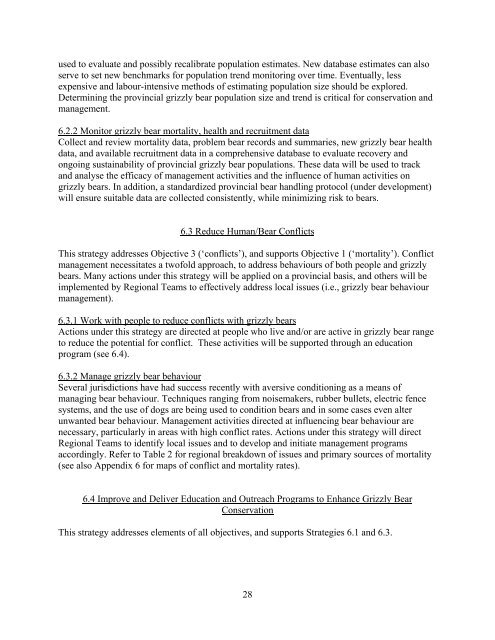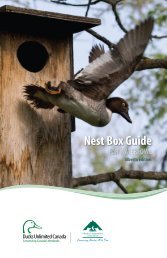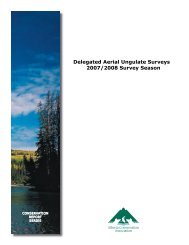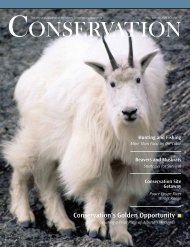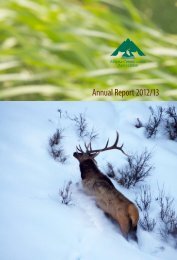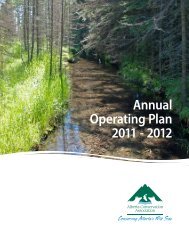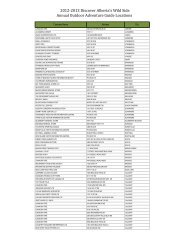Alberta Grizzly Bear Recovery Plan 2008-2013 - Alberta Sustainable ...
Alberta Grizzly Bear Recovery Plan 2008-2013 - Alberta Sustainable ...
Alberta Grizzly Bear Recovery Plan 2008-2013 - Alberta Sustainable ...
Create successful ePaper yourself
Turn your PDF publications into a flip-book with our unique Google optimized e-Paper software.
used to evaluate and possibly recalibrate population estimates. New database estimates can also<br />
serve to set new benchmarks for population trend monitoring over time. Eventually, less<br />
expensive and labour-intensive methods of estimating population size should be explored.<br />
Determining the provincial grizzly bear population size and trend is critical for conservation and<br />
management.<br />
6.2.2 Monitor grizzly bear mortality, health and recruitment data<br />
Collect and review mortality data, problem bear records and summaries, new grizzly bear health<br />
data, and available recruitment data in a comprehensive database to evaluate recovery and<br />
ongoing sustainability of provincial grizzly bear populations. These data will be used to track<br />
and analyse the efficacy of management activities and the influence of human activities on<br />
grizzly bears. In addition, a standardized provincial bear handling protocol (under development)<br />
will ensure suitable data are collected consistently, while minimizing risk to bears.<br />
6.3 Reduce Human/<strong>Bear</strong> Conflicts<br />
This strategy addresses Objective 3 (‘conflicts’), and supports Objective 1 (‘mortality’). Conflict<br />
management necessitates a twofold approach, to address behaviours of both people and grizzly<br />
bears. Many actions under this strategy will be applied on a provincial basis, and others will be<br />
implemented by Regional Teams to effectively address local issues (i.e., grizzly bear behaviour<br />
management).<br />
6.3.1 Work with people to reduce conflicts with grizzly bears<br />
Actions under this strategy are directed at people who live and/or are active in grizzly bear range<br />
to reduce the potential for conflict. These activities will be supported through an education<br />
program (see 6.4).<br />
6.3.2 Manage grizzly bear behaviour<br />
Several jurisdictions have had success recently with aversive conditioning as a means of<br />
managing bear behaviour. Techniques ranging from noisemakers, rubber bullets, electric fence<br />
systems, and the use of dogs are being used to condition bears and in some cases even alter<br />
unwanted bear behaviour. Management activities directed at influencing bear behaviour are<br />
necessary, particularly in areas with high conflict rates. Actions under this strategy will direct<br />
Regional Teams to identify local issues and to develop and initiate management programs<br />
accordingly. Refer to Table 2 for regional breakdown of issues and primary sources of mortality<br />
(see also Appendix 6 for maps of conflict and mortality rates).<br />
6.4 Improve and Deliver Education and Outreach Programs to Enhance <strong>Grizzly</strong> <strong>Bear</strong><br />
Conservation<br />
This strategy addresses elements of all objectives, and supports Strategies 6.1 and 6.3.<br />
28


